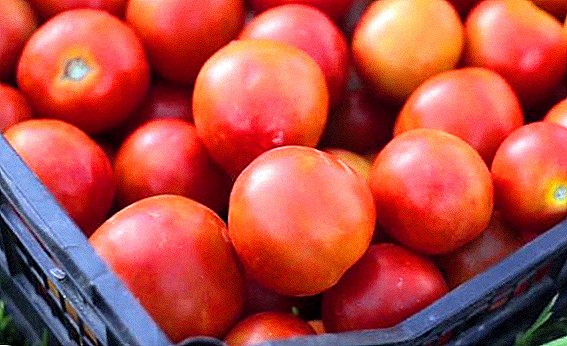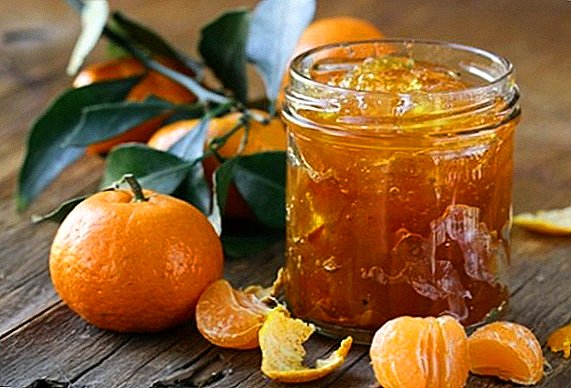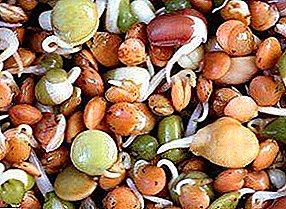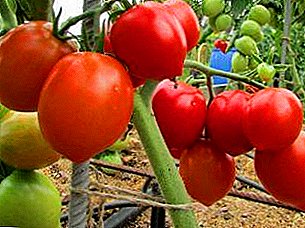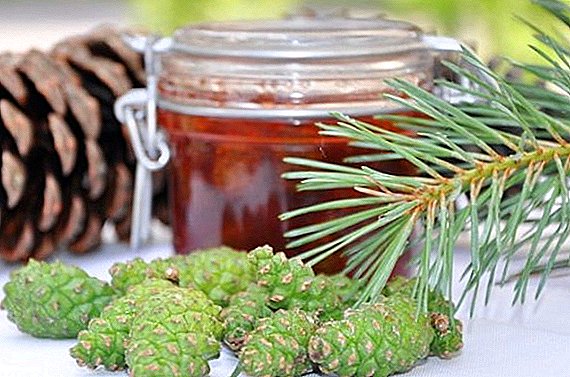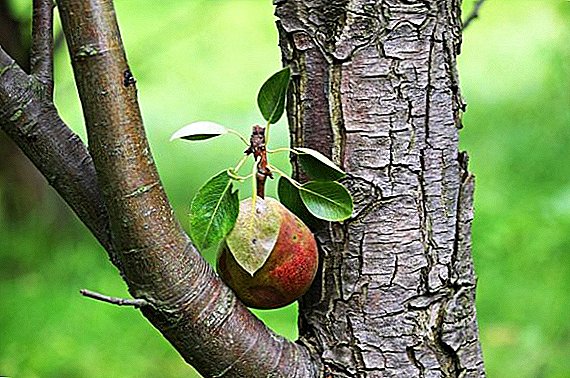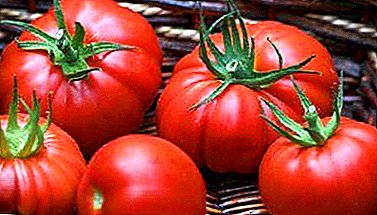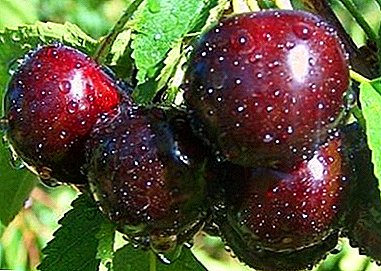
In Russia, grown many varieties of cherries.
Quite widespread cherry varieties Nadezhda, which can be explained by its taste and good yield.
A full description of the variety and photo of the fruit is given later in the article.
Breeding history and breeding region
 The cherry variety Nadezhda was brought to the Rossoshansky zonal experimental gardening station.
The cherry variety Nadezhda was brought to the Rossoshansky zonal experimental gardening station.
Its creator has become AND I. Voronchikhina, which received a new variety of cherry, pollinating flowers of the cherry variety Griot Ostgeim pre-mixed pollen cherry varieties Liqueur and North.
Since 1995, Cherry Hope has been entered in the register of varieties Central Black Earth Region. In this region, such varieties Zhivitsa, Turgenevka, Kharitonovskaya, Shokoladnitsa are successfully grown.
Appearance of cherry Hope
Consider separately the appearance of the tree and fruit.
Tree
Cherry trees varieties Hope decided to attribute to vigorous, as in height, they can reach five to six meters. They are characterized by good foliage and have a crown of medium thickness, which may have a rounded or pyramidal shape. The tree trunks are covered with dark gray bark that has sufficient roughness.
Young trees can have a longitudinal cracking on the trunk, thanks to which you can see the new shiny bark of silver-brown color and the already old gray bark. The cherry shtam Nadezhda is characterized by medium crock.
 Wood gives straight shoots, equipped with long internodes.
Wood gives straight shoots, equipped with long internodes.
Initially, they have a green-brown color, and a little later they acquire a red hue and overgrow with a large number of small convex rounded glands.
Vegetative buds in size reach five to six millimeters and have an elongated egg shape with a pointed tip.
The size of generative kidneys is about four to five millimeters. They have an ovoid shape with a rounded tip.
Leaves Nadezhda cherries are characterized by a rounded shape with a pointed tip and leathery consistency. The length of the leaf blade is ten to eleven centimeters, and the width is from four to six centimeters.
Its outer side has a smooth surface and green color, it differs in dullness and concavity along the central vein.
Inner side leaf blade has a light green color and a pinkish central vein. There is slight hairy pubescence along the lateral veins.
The size of the petioles ranges from fifteen to twenty millimeters. They have a dirty pink color and medium thickness. On top, the petioles are characterized by slight hairiness, and from the bottom they are bare.
Stipules this type of cherry is absent, and the glands may be present in the amount of one or two pieces or be completely absent.
 In the inflorescences of this tree there are usually two or three flowers, but there can be only one.
In the inflorescences of this tree there are usually two or three flowers, but there can be only one.
For flowers characteristic large size - in diameter, they can reach thirty-five to forty millimeters.
At the beginning of the flowering of the tree, the flowers have a white color, and by the end of flowering pinkish spots appear on them.
Petals have a corrugated base and spoon-shaped. The pistil is usually located on the same level with stamens or slightly lower. The length of the stamens is from ten to twelve millimeters, and the pistil with the ovary is from thirteen to fifteen millimeters.
Fruit
Cherry Hope is characterized large fruits ploskookrugly form with dark red skin. Their average weight is 5.8 grams. The flesh has a uniform texture and medium density. The color of the pulp is dark red. The fruit has red juice.
Large fruits also show cherries Vianok, Generous and Lighthouse.
They usually have a short and thick stem that can be easily torn off if the fruit has ripened. The average bone weight is 0.38 grams. The stone has an unequal round shape and a light brown color; it is almost half separated from the fruit pulp.
The berries have a sweet taste with a slight sourness and no astringency, and also have a pleasant aroma. On the tasting scale, they gain 4.5 points.
A photo




Characteristics of a variety
Cherry Hope refers to mid-season varieties. Its fruits reach maturity in July, but in the southern regions they can ripen in the last decade of June. Anti-grafted trees begin to bear fruit in the fourth or fifth year and are characterized by high precocity.
This variety of cherry is self-fertile. It begins to bloom early, and cherries such as Lada, Kent and black big cherry.
 Cherry Hope is characterized fairly high yield levels.
Cherry Hope is characterized fairly high yield levels.
Up to 16 kilograms of harvest can be harvested from a single tree.however, with such a height of trees this fact is not surprising.
These trees tolerate winter, but flower buds can die in particularly cold weather.
Rossoshanskaya black, Tamaris, Turgenevka and Chernokorka also demonstrate high yields.
Planting and care
Cherry varieties Nadezhda prefers light and medium-loamy soils with a neutral environment and does not tolerate stagnant groundwater. The best season for planting cherry trees is spring.
Pits a depth of 40 to 45 centimeters and a diameter of 50 to 60 centimeters need to dig at a distance of 3 meters from each other.
The soil pulled out of the pit should be mixed with one-to-one humus in the ratio, adding 20 grams of potassium chloride, 30 grams of superphosphate and about 1 kg of ash. In the case of planting in heavy clay soil it is necessary to add one bucket of river sand.
Carefully inspect the cherry seedlings for damage to the roots. If any, these roots should be pruned.
After landing do not forget to make a circle earthen roller at a distance of 25 centimeters from the trunkwhich will serve as a hole for watering. Water seedlings need ordinary water, preheated under the sun. For watering one seedling will be enough two or three buckets of water.
 An adult tree needs to be watered three times during the season. First time it is watered after flowering, and second time - after increasing the size of the fruit. Third watering produced in early October immediately after the leaves fall.
An adult tree needs to be watered three times during the season. First time it is watered after flowering, and second time - after increasing the size of the fruit. Third watering produced in early October immediately after the leaves fall.
During the entire growing season do not forget to regularly loosen the soil near the tree and free it from weeds.
The first two or three years after planting cherry Hope does not need fertilizershowever, after this period they must be paid regularly.
From the age of two, you can begin to engage in the formation of the crown of a cherry tree. To do this, it is pruned by shortening the growth of last year by a third of their length.
To protect young cherry trees severe frost and sunburn You can use glass wool, roofing felt, reed and heavy paper. If damage occurs on the trunk, they should be cleaned with a garden knife and coated with garden pitch, and then tied with a thick cloth.
Diseases and pests
 Cherry variety Hope characterized by good stability to such common diseases as moniliosis and coccomycosis.
Cherry variety Hope characterized by good stability to such common diseases as moniliosis and coccomycosis.
High resistance to coccomycosis can boast varieties Malinovka, Lebedyanskaya, Volochaevka and Podbelskaya.
Rodents do not usually attack this tree, as it has bitter bark.However, the use of poison for them on your site still does not hurt.
The disadvantages of the Nadezhda cherry variety are in the height of the tree, which makes picking berries not very convenient, and in its fruitlessness.
However, they are more than compensated for by such advantages as frost resistance, excellent taste qualities of fruits and good yield.


